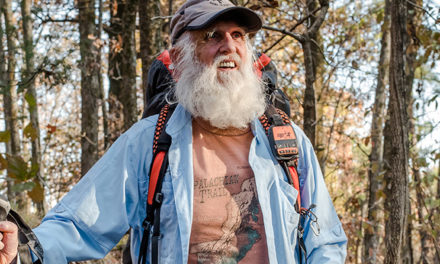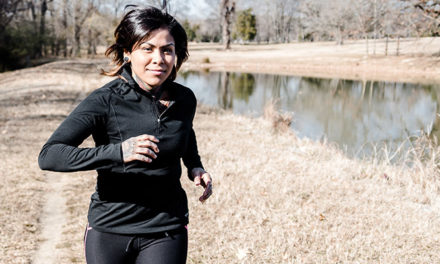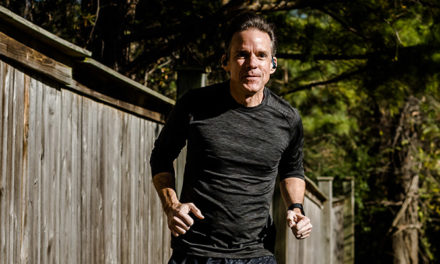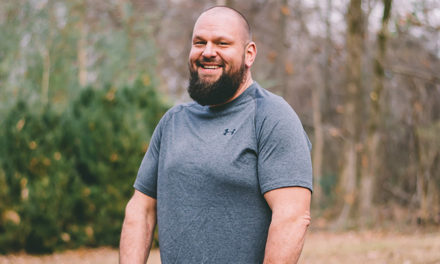While most of us were holed up in our houses or staying close to home this summer, Dr. Barbara Geater, 55, took this year as an opportunity to realize a dream she had tucked away long ago.
The idea to hike the full length of the Appalachian Trail was born during the summers she spent camping and hiking with her family around that area when she was younger. “I put the idea away,” she remembers. ”I had not even thought about it for probably 30 years.”
In the time since, Barbara went to med school and opened her own successful family medical practice serving the community in South Memphis. Work was enough to keep her busy and focused, until she took a trip with her friend to hike a small section of the trail in 2017.
“That’s when I sort of rekindled the thought that I had when I was younger to do it. So, I just started planning in that direction.”
Barbara had to consider all the people who count on her as she made her plans for the 2,190-mile hike. She approached a group of 12 doctors, identifying one in each specialty, who she could trust to help her staff of nurse practitioners should they be unable to reach her on the trail.
“I thought some people would go, ‘Are you crazy?’” she recalls. “I didn’t get that. Everyone was so positive.”
With the support of her patients, staff, friends, and family, Barbara and a friend hit the trail with a friend on May 4, 2020. As their journey unfolded, they faced freezing nights and a steep learning curve for how much to carry and the logistics of resupplying. And it didn’t take long for the two to realize that they hike at very different speeds.
“She likes to hike 30 to 40 miles per day, and I’m more of a 15- to 25-mile person,” Barbara explains. She laughs, “My friend took two weeks off in the middle and still finished four weeks before me.”
While Barbara found herself solo, hikers on the Appalachian Trail aren’t always necessarily alone. They camp and swap stories along the way, although the pandemic had its impact on the trail. “We didn’t see six and eight people traveling together like you would have a lot of other years,” she says. “I think I had an experience like you would have had 10 to 20 years ago.”
Unsure of how towns along the trail were receiving hikers, Barbara initially overpacked and was carrying about 30 pounds. However, it didn’t take long before she realized she could shed some of that extra weight.
“These towns really did want you because they survive on tourism and that’s their main source of income,” she says. “They were cautious, but they were not unwelcoming.”
Her pack weight wasn’t all that became lighter. Barbara lost 10 pounds in the first three weeks. Whenever she was off the trail, she bought two pints of Ben & Jerry’s ice cream—eating one after dinner and one after breakfast the next day before setting out to hike in order to keep on weight. She was about two-thirds of the way through her hike and down 30 pounds when she was introduced to coconut oil, which she starting incorporating into every meal.
“By the time you add one tablespoon at breakfast and three tablespoons at dinner, it’s between 500 and 800 calories,” she says.
With her energy up and the hike going smoothly, Barbara was able to enjoy the challenges of the trail and earned herself the nickname “Little Tripper”.
While making her way through the backcountry, wildlife encounters were par for the course. She heard coyotes, saw deer, and enjoyed conversation with two young lawyers as they waited for a mama bear and her cubs to clear the trail. But it was the squirrels that caught her by surprise.
“At one place I was camping, I was fixing my meal and they were dropping pine cones on me,” she says. “Within three minutes of me moving, they were over there dropping pine cones on me again. They were doing it on purpose.”
Still undeterred by the many discomforts and challenges, Barbara forged on bravely. It wasn’t until she reached Mount Katahdin, the famous mountain in Maine that marks the end of a thru-hiker’s journey, that she seriously considered giving up. Elevation gains and boulder fields weren’t enough to break her stride, but the six-foot rock faces she needed to scale were almost enough to make the petite five-foot doctor turn around.
“I summited on a terrible day. You could only see about 10 to 20 feet ahead, but the next day was projected to be worse. I knew I wouldn’t have to come down the same way. That was literally the only thing that kept me going to the top.”
With temperatures in the mid-30s, wind gusts, and soaking wet clothes as a result of summiting in a cloud, Barbara didn’t experience the elation other hikers describe when they finish such a notable hike.
“I was still so terrified and the weather was so bad, I honestly had an anticlimactic, ‘I’m just glad I’m done,” she recalls. Many blisters, scrapes, chilly nights, and pints of ice cream later, Barbara finished on Tuesday, Oct. 6, five months and three days after she started and says, “I’m glad I did it.”
By Kelsey J. Lawrence
Photo by Tindall Stephens







